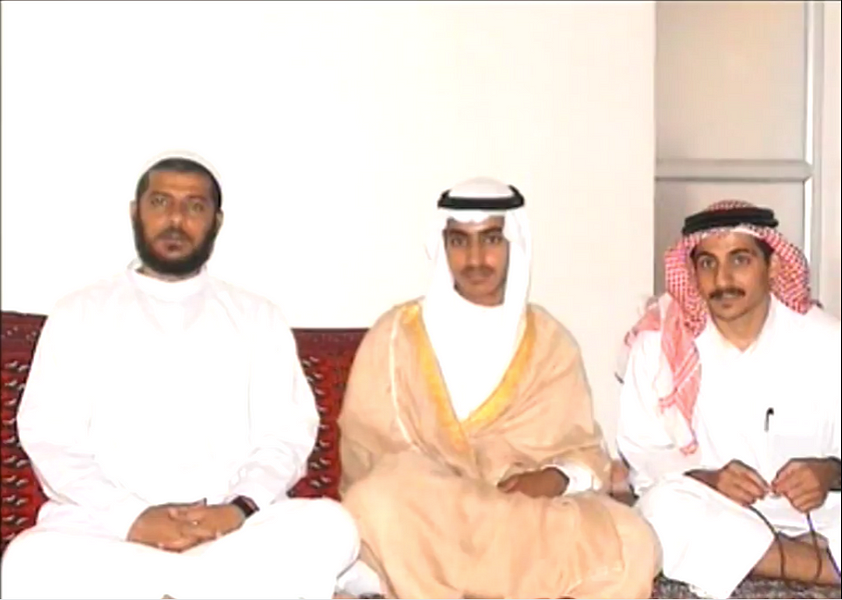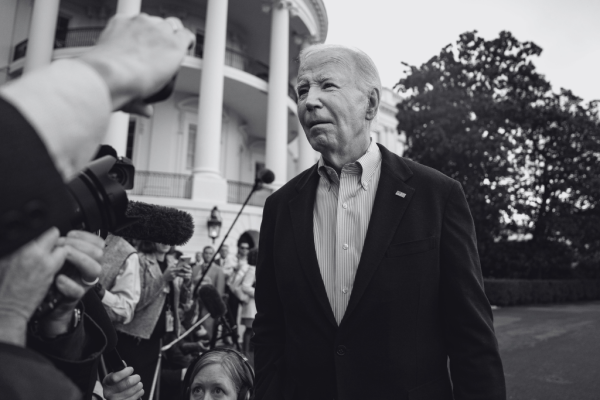In 2005, Abu Muhammad al-Masri (left) attended the wedding of Hamza bin Laden (center) to his daughter in Iran.
On August 7, Israeli operatives, acting at the behest of American officials, gunned down the deputy emir of al-Qaeda in a well-to-do suburb of Tehran, Iran. The al-Qaeda leader, a veteran jihadist known as Abu Muhammad al-Masri, had been wanted by the U.S. government for more than two decades.
Masri (also known as Abdullah Ahmed Abdullah) was implicated in the August 7, 1998, U.S. Embassy bombings in Kenya and Tanzania. The date of those twin attacks, which left 224 people dead, was quite obviously on the minds of those who planned the highly secretive assassination behind enemy lines. Gunmen working on behalf of America’s ally finally caught up with Masri 22 years later to the day.
The clandestine hit was first reported by an al-Qaeda linked social media account, which accurately relayed that both Masri and his daughter, Miriam, had been killed in Iran. That version of events was translated and published by MEMRI on October 20. Three weeks later, anonymous intelligence officials confirmed to the New York Times and then other press outlets that the operation had taken place. The Israeli media has reported additional, provocative allegations, including that father and daughter were planning attacks on Israeli and U.S. interests at the time of their demise.
In addition to being the daughter of al-Qaeda’s second-in-command, Miriam was the widow of Hamza bin Laden, Osama’s heir. The U.S. previously killed Hamza somewhere in the Afghanistan-Pakistan region but has provided few details concerning exactly where and when he was hunted down. Hamza married Miriam during his own sojourn in Iran.
After 9/11, much of Osama bin Laden’s immediate family relocated to Iran. Eventually, their stay in Iran became contentious, as the Iranians wouldn’t allow them to leave. But their stay wasn’t always so restrictive. Around 2005, Hamza married Miriam in a union that was intended to bolster the next generation of al-Qaeda.
Footage from the wedding was found during the May 2011 raid on Osama bin Laden’s Abbottabad, Pakistan, compound. In 2017, the CIA released the video, along with thousands of additional documents and files that had been kept under lock and key. Judging by the footage, the wedding was a festive affair, with Abu Muhammad al-Masri personally attending alongside other al-Qaeda leaders who had sought refuge inside Iran. Masri can be seen sitting to Hamza’s right in the screenshot from the video above. It is the most recent publicly available image of him. In fact, al-Qaeda commentators on social media are using a cropped head shot from that same image in their eulogies for him.
To be sure, the Iranians and al-Qaeda have been at odds in various ways. They are on opposite sides of the wars in Syria and Yemen. And Iran reportedly did place senior al-Qaeda leaders such as Abu Muhammad al-Masri in a form of detention at some point. In 2015, the Iranians freed Masri and four others in exchange for an Iranian diplomat. Al-Qaeda had kidnapped Tehran’s representative in order to free Masri and the others.
But Masri and his longtime comrade, another veteran al-Qaeda leader known as Saif al-Adel, had been operating inside Iran since then. In the summer of 2018, the State Department increased the reward for information concerning each of them from $5 million to $10 million. Concurrently, a team of experts working for the U.N. Security Council reported that Masri and Adel were managing al-Qaeda’s global affairs from inside Iran. Separately, another al-Qaeda operative confirmed that the two were no longer imprisoned but instead living their “natural lives” inside Iran.
In short, it was well-known that Abu Muhammad al-Masri was a free man inside Iran—free enough to do al-Qaeda’s business—when Israel’s assassins caught up with him and his daughter.
None of this should be revelatory. But in confirming Masri’s death, the New York Timesclaimed it was “surprising” to learn that he lived in Iran, because the Iranians and al-Qaeda are “bitter enemies.” The Times did not stop to reconsider its one-dimensional assessment even though its own sources explained that Masri “had been living freely in the Pasdaran district of Tehran, an upscale suburb, since at least 2015”—that is, for the past five years.
It is a myth that the Shiite Iranian regime and Sunni al-Qaeda are incapable of collusion. It is true that they are at odds in various ways, but duplicity is a fundamental characteristic of human behavior. There is a wealth of evidence, stretching back to the early 1990s, showing that the two have repeatedly cooperated. The 1998 U.S. Embassy bombings are a good example.
The 9/11 Commission found Iran and its chief terrorist proxy, Hezbollah, gave al-Qaeda the “tactical expertise” necessary for those near-simultaneous attacks. Osama bin Laden and his lieutenants were impressed with how Iranian-backed terrorists forced America’s retreat from Lebanon in the 1980s. And al-Qaeda wanted to replicate that success. While living in Sudan in the early 1990s, Osama bin Laden reached out to Iran’s master terrorist and Hezbollah’s chieftain, Imad Mughniyah. As a result of their encounter, as well as other meetings, al-Qaeda sent personnel to Iran and Hezbollah’s stronghold in the Bekaa Valley of Lebanon. Al-Qaeda’s men were shown how to build the bombs necessary to conduct an operation such as Hezbollah’s 1983 bombings on the American and French military barracks in Lebanon. Thus, Iran’s 1983 barracks bombings served as a template for al-Qaeda’s 1998 embassy bombings.
There is no material dispute over these facts. In addition to the 9/11 Commission’s final report (see, for example, pages 61 and 68), this story has been recounted by firsthand al-Qaeda witnesses in U.S. district courts, as well as in assessments compiled by the U.S. intelligence community. In more recent years, the U.S. Treasury and State Departments have repeatedly exposed the details of a formerly “secret deal” between Iran and al-Qaeda. Under that agreement, the Iranians allow al-Qaeda to maintain its “core facilitation pipeline” on their soil. Osama bin Laden himself referred to this Iranian hub as the “main artery” for his global network.
As readers of my work know, there is a constellation of data points about the Iranian regime’s cooperation with al-Qaeda. And this evidence has been the basis of multiple official U.S. government assessments, including during the Obama administration, which sought a version of détente with the Iranians. “By exposing Iran’s secret deal with al-Qaeda allowing it to funnel funds and operatives through its territory, we are illuminating yet another aspect of Iran’s unmatched support for terrorism,” David S. Cohen, who was then the Under Secretary for Terrorism and Financial Intelligence at the Treasury Department, said in July 2011.
Abu Muhammad al-Masri knew better. That’s why he decided to live inside Iran for the past five years. And Iran was his safe haven—until Israel’s assassins proved otherwise.








Please note that we at The Dispatch hold ourselves, our work, and our commenters to a higher standard than other places on the internet. We welcome comments that foster genuine debate or discussion—including comments critical of us or our work—but responses that include ad hominem attacks on fellow Dispatch members or are intended to stoke fear and anger may be moderated.
You are currently using a limited time guest pass and do not have access to commenting. Consider subscribing to join the conversation.
With your membership, you only have the ability to comment on The Morning Dispatch articles. Consider upgrading to join the conversation everywhere.